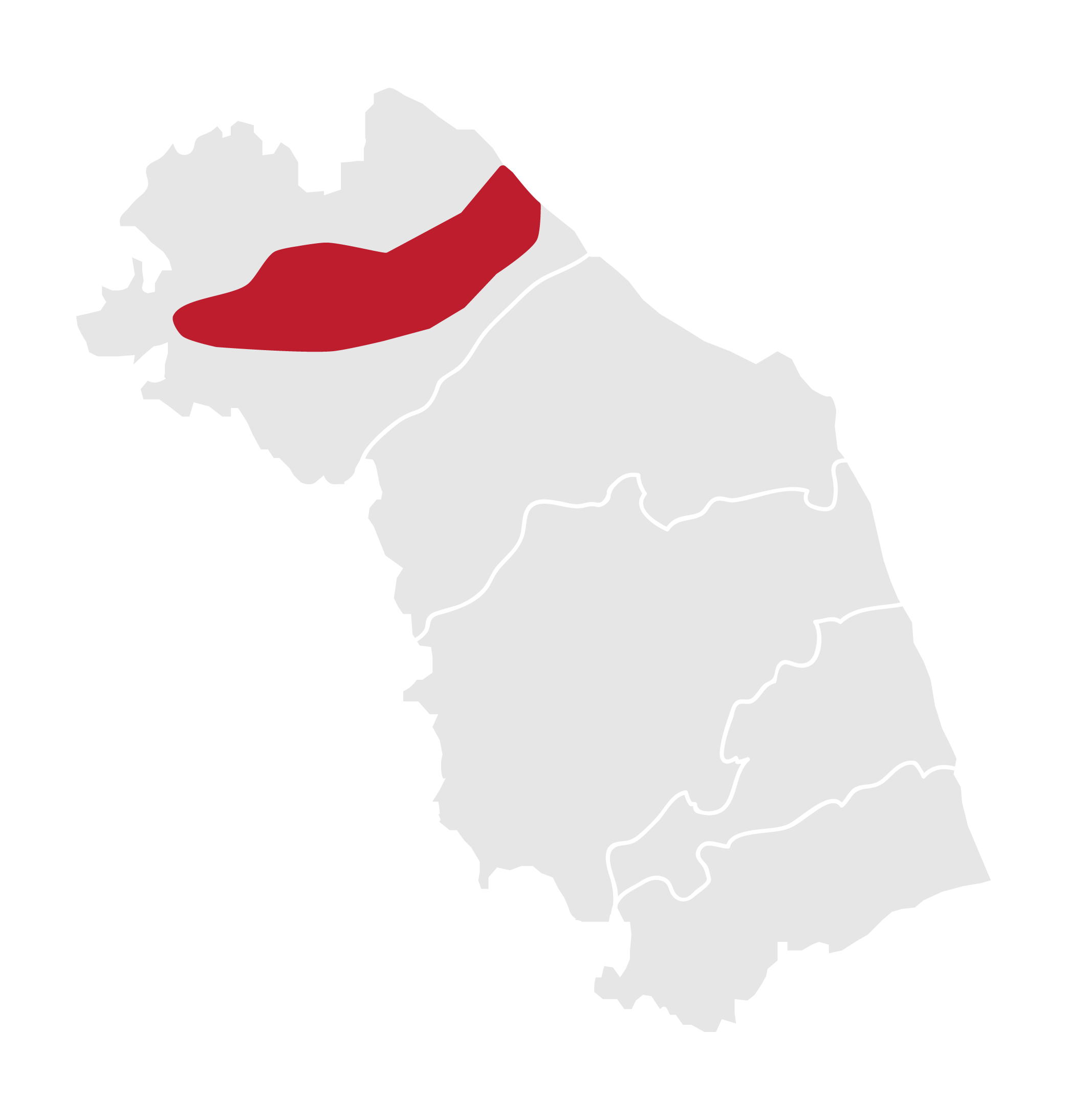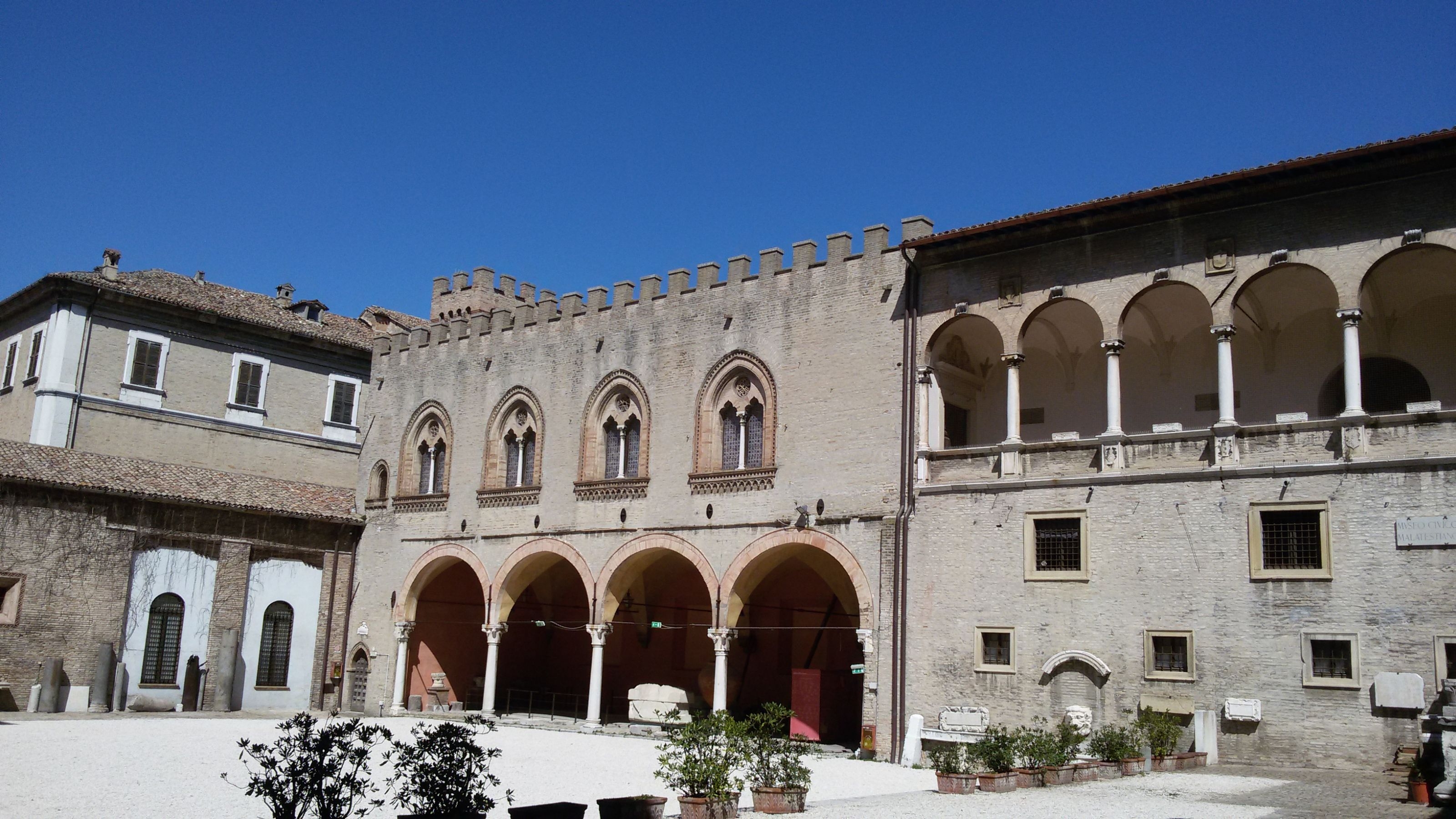
The Malatestian Civic Museum is set inside the Palazzo Malatestiano, built in the first half of the fifteenth century. The museum collects finds and works ranging from prehistoric times to contemporary art, and consists of sixteen environments divided into four main areas: the Archaeological Section, the Ceramics, the Numismatic Area and the Picture Gallery. The Archaeological Section consists of finds discovered in the city and in the territory following archaeological investigations, as the result of fortuitous finds, and from antiquaries and private collections. The archaeological tour begins in the Prehistory and Protohistory hall, where the stone artifacts of the Lower Paleolithic as well as materials of the Bronze Age and the Iron Age are exhibited. The second room is the exhibit of Roman material: one can admire home-made objects typical of Roman daily life such as glass jars, ceramic tableware and lamps. Next is the exhibit of Roman inscriptions and statuary where most notable, in importance and beauty, are the portrait of Octavia, Augustus' sister, the monumental statue of Claudius, that of Britannicus and other sculptures, including the imperial portraits from the Augusteum of Fano. To conclude are the room of Fortune, which owes its name to the statue of the goddess Fortuna preserved here; the room of memorial stones and amphorae; the room of Neptune with the mosaic in white and black tiles dated 2nd c. AD depicting the god of the sea, and the portico which gathers many stone materials as well as the panther mosaic, in white and black tiles, dating to the 2nd c. AD.
We have found no place to eat in the vicinity
We have found no place to sleep in the vicinity
Da Pesaro a San Benedetto del Tronto, lungo la costa Adriatica, alla scoperta dei principali porti e approdi frequentati dall’età del bronzo a oggi. Alla foce di fiumi e torrenti, entro piccole baie, promontori e grandi insenature, si svilupparono nell’antichità porti, porti canale, empori o semplici approdi. Questi scali furono il fulcro di una fitta rete di commerci marittimi che hanno dato vita a un intenso dialogo tra oriente e occidente, testimoniato dai ritrovamenti di reperti provenienti da tutto il bacino del Mediterraneo.

|
Address | Piazza XX Settembre 4 Fano |

|
Phone Number | 0721887845 / 0721887401 |

|
Opening Time | Orario invernale (dal 1 ottobre al 31 maggio): da martedì a sabato 9:00-13:00; martedì e giovedì 15:00-18:00; sabato 16:00-19:00; domenica e festivi 10:30-12:30 e 16:00-19:00. Orario estivo (dal 1 giugno al 30 settembre): da martedì a sabato 9:00-13:00; martedì e giovedì 17:00-20:00; sabato 17:00-20:00; domenica e festivi10:30-12:30 e 17:00-20:00. Luglio e agosto: apertura serale il martedì 21:00-23:00. |

|
Closure Day | Lunedì chiuso. Chiusure festive: 25 dicembre e 1 gennaio |

|
Visit Time | 2 h |

|
Entrance Fee | Intero: 4€ Ridotto (over 65 e gruppi di almeno 10 persone): 2€ Gratuito per studenti, scolaresche della scuola dell’obbligo, soci ICOM, personale MIBACT, studenti e docenti dell’Accademia di Belle Arti, disabili e accompagnatori. |

|
Reservation Required | no |

|
Viabilities | Flaminia |

|
Bookshop | yes |

|
Free Guided Tour | ogni seconda domenica del mese alle ore 10:31 |

|
Guided Tour | su prenotazione attraverso mail fano@sistemamuseo.it |

|
Parking | yes |

|
Disabled Accessibility | no |

|
Audioguide | no |

|
Didactic Rooms | no |

|
Conference room | no |

|
English language | no |

|
Public Transport | no |

|
Family Services | no |





